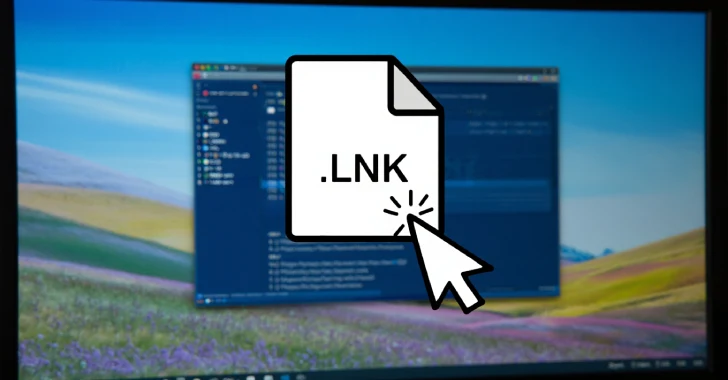
Patchwork Targets Turkish Defense Firms with Spear-Phishing Using Malicious LNK Files
The relentless threat landscape continues to evolve, with advanced persistent threat (APT) groups constantly refining their tactics. A recent campaign attributed to the threat actor known as Patchwork highlights the critical importance of robust defense mechanisms, particularly for organizations holding valuable strategic intelligence. This report delves into their latest spear-phishing efforts targeting Turkish defense contractors, aiming to dissect their methodology and offer actionable remediation strategies.
Patchwork’s Renewed Focus on Turkish Defense
Patchwork, a recognized APT, has once again demonstrated its intent to acquire sensitive information. Their most recent campaign specifically zeroes in on Turkish defense contracting firms. This focused targeting suggests a strategic objective: the collection of intelligence related to national defense capabilities and technological advancements. Such intelligence could provide significant geopolitical advantages to the perpetrators.
The Malicious LNK File Vector: A Five-Stage Execution Chain
The primary delivery mechanism for this sophisticated attack is a carefully crafted spear-phishing email. These emails are designed to appear as legitimate conference invitations, specifically luring targets interested in unmanned vehicle systems. Unbeknownst to the recipient, these invitations conceal malicious LNK files, serving as the initial entry point for a multi-stage compromise.
According to research by Arctic Wolf Labs, the campaign leverages a sophisticated five-stage execution chain. This modular approach allows the attackers to maintain stealth and flexibility, gradually deploying their malicious payload rather than delivering it all at once.
- Stage 1: Initial Compromise via LNK File: The victim executes the seemingly innocuous LNK file, unknowingly triggering the first stage of the attack.
- Stage 2: Payload Delivery: The LNK file initiates the download or execution of subsequent malicious components.
- Stage 3: Persistence Mechanism: The attackers establish a foothold within the compromised system, ensuring continued access.
- Stage 4: Data Exfiltration Preparation: Tools and scripts are deployed to identify, gather, and prepare sensitive data for exfiltration.
- Stage 5: Data Exfiltration: The gathered intelligence is securely transmitted out of the victim’s network to the attacker’s command and control (C2) infrastructure.
Understanding LNK File Abuse in Cyber Attacks
LNK files, or Windows Shortcut files, are commonly used and often overlooked by basic security measures. Their deceptive simplicity makes them an attractive vector for threat actors. By embedding malicious commands or pointing to remote payloads, attackers can bypass traditional execution policies that might flag direct executable attachments. This technique, while not new, remains effective due to its reliance on user interaction and the often-unexamined nature of common file types.
While this particular campaign doesn’t leverage a specific CVE for LNK file vulnerabilities, the technique exploits how Windows handles shortcuts and the trust users place in familiar file types. It underlines the importance of robust security awareness training and endpoint detection and response (EDR) solutions capable of analyzing file behavior beyond file extension alone.
Remediation Actions and Proactive Defenses
Defending against sophisticated spear-phishing campaigns like those employed by Patchwork requires a multi-layered security strategy. Organizations, particularly those in defense and critical infrastructure, must adopt a proactive stance.
- Enhanced Email Security: Implement advanced email filtering solutions capable of detecting and blocking malicious attachments, even those disguised as common file types like LNK. Employ sandboxing for suspicious attachments.
- Endpoint Detection and Response (EDR): Deploy EDR solutions on all endpoints to monitor for suspicious processes, LNK file execution anomalies, and unusual network connections indicative of C2 communication.
- Security Awareness Training: Regularly train employees to recognize spear-phishing attempts. Emphasize the dangers of unsolicited attachments, even from seemingly legitimate sources, and the importance of verifying sender identities.
- Disabling LNK File Auto-Execution: While not a silver bullet, configuring Group Policies to restrict LNK file execution from untrusted sources can add an additional layer of defense.
- Network Segmentation: Isolate critical defense systems and sensitive data on segmented networks to limit the lateral movement of attackers in the event of a breach.
- Least Privilege Principle: Enforce the principle of least privilege for all user accounts and applications, minimizing the damage an attacker can inflict if an account is compromised.
- Regular Patching and Updates: Ensure all operating systems, applications, and security software are routinely patched and updated to remediate known vulnerabilities.
- Threat Intelligence Integration: Subscribe to and integrate threat intelligence feeds regarding APT groups like Patchwork to stay informed about their evolving tactics, techniques, and procedures (TTPs).
| Tool Name | Purpose | Link |
|---|---|---|
| Microsoft Defender for Endpoint | Comprehensive EDR for Windows environments, detecting malicious LNK execution and related activity. | https://www.microsoft.com/en-us/security/business/threat-protection/microsoft-defender-for-endpoint |
| Proofpoint Email Protection | Advanced email security gateway with deep content analysis and sandboxing capabilities. | https://www.proofpoint.com/us/products/email-protection |
| Volatility Framework | Memory forensics tool for analyzing LNK file artifacts and process execution in compromised systems. | https://www.volatilityfoundation.org/ |
| YARA Rules | Pattern matching signature tool for identifying specific malware families and LNK file structures. | https://virustotal.github.io/yara/ |
Conclusion: Heightened Vigilance is Imperative
The ongoing activity of groups like Patchwork underscores the persistent and sophisticated nature of state-sponsored cyber espionage. Their latest campaign against Turkish defense firms, leveraging malicious LNK files and multi-stage execution chains, serves as a stark reminder that even seemingly innocuous file types can be weaponized. For organizations with high-value targets, continuous threat intelligence integration, robust security awareness training, and advanced endpoint and email security solutions are not optional; they are foundational requirements for maintaining a defensible cybersecurity posture.





